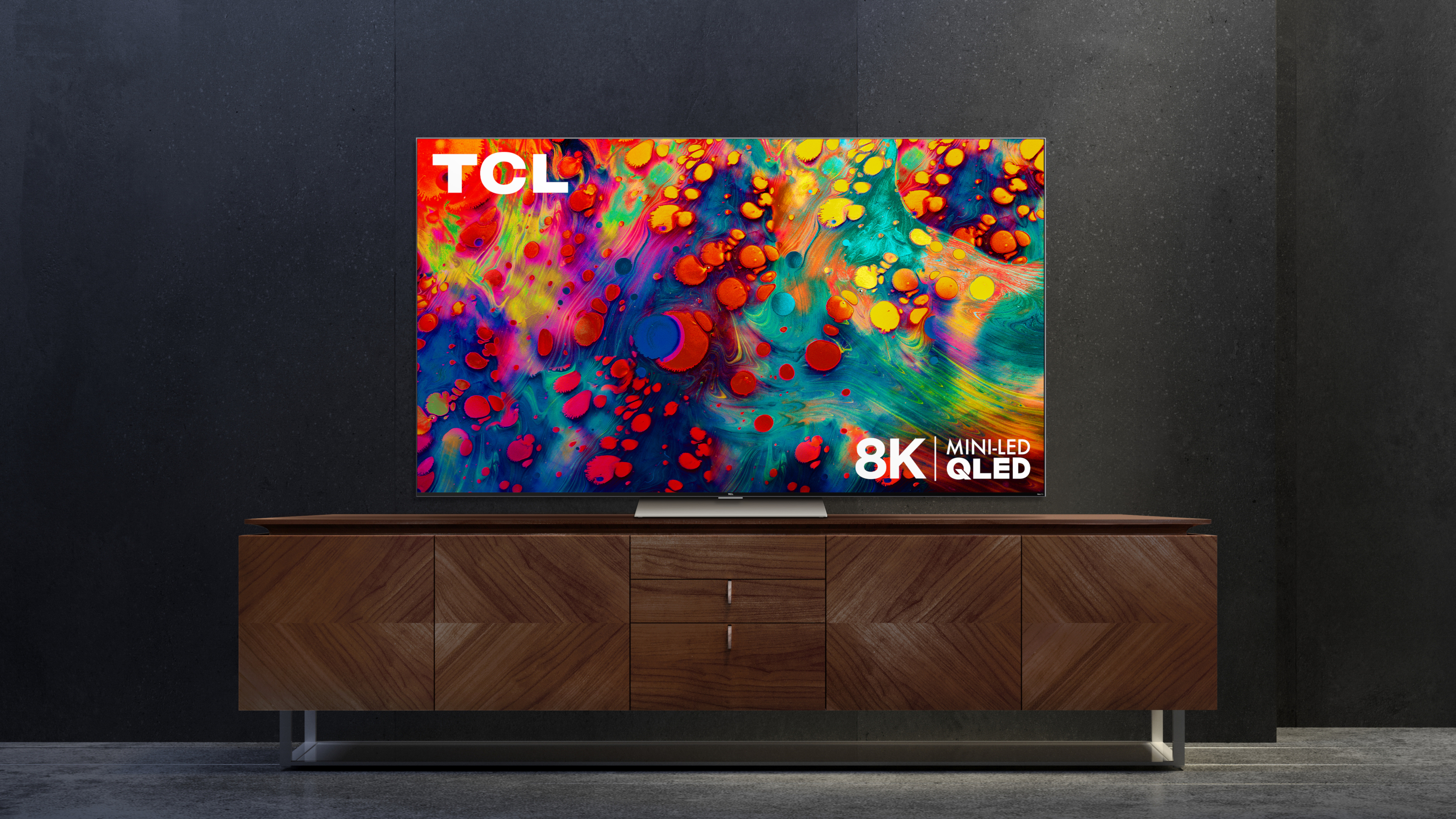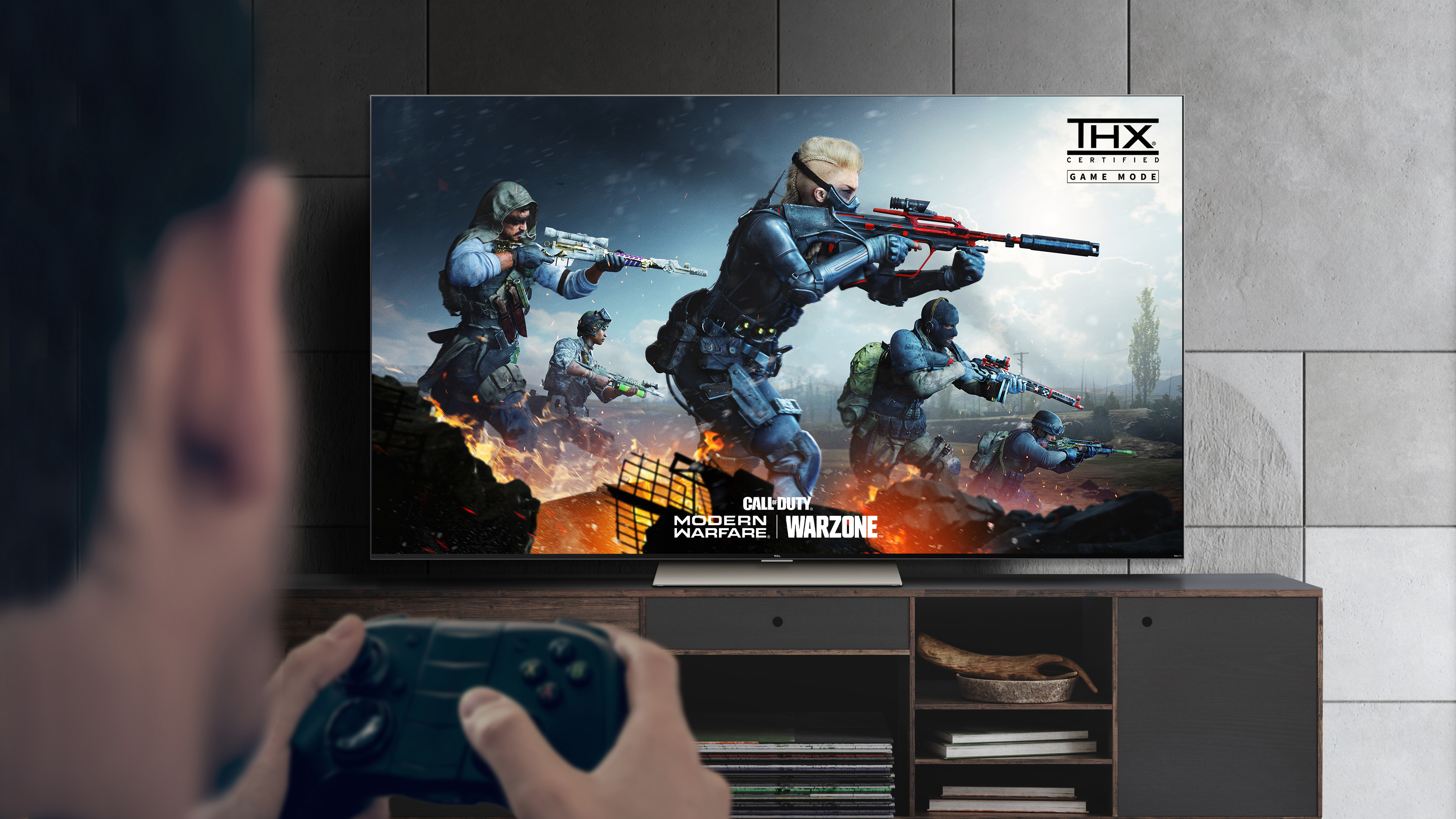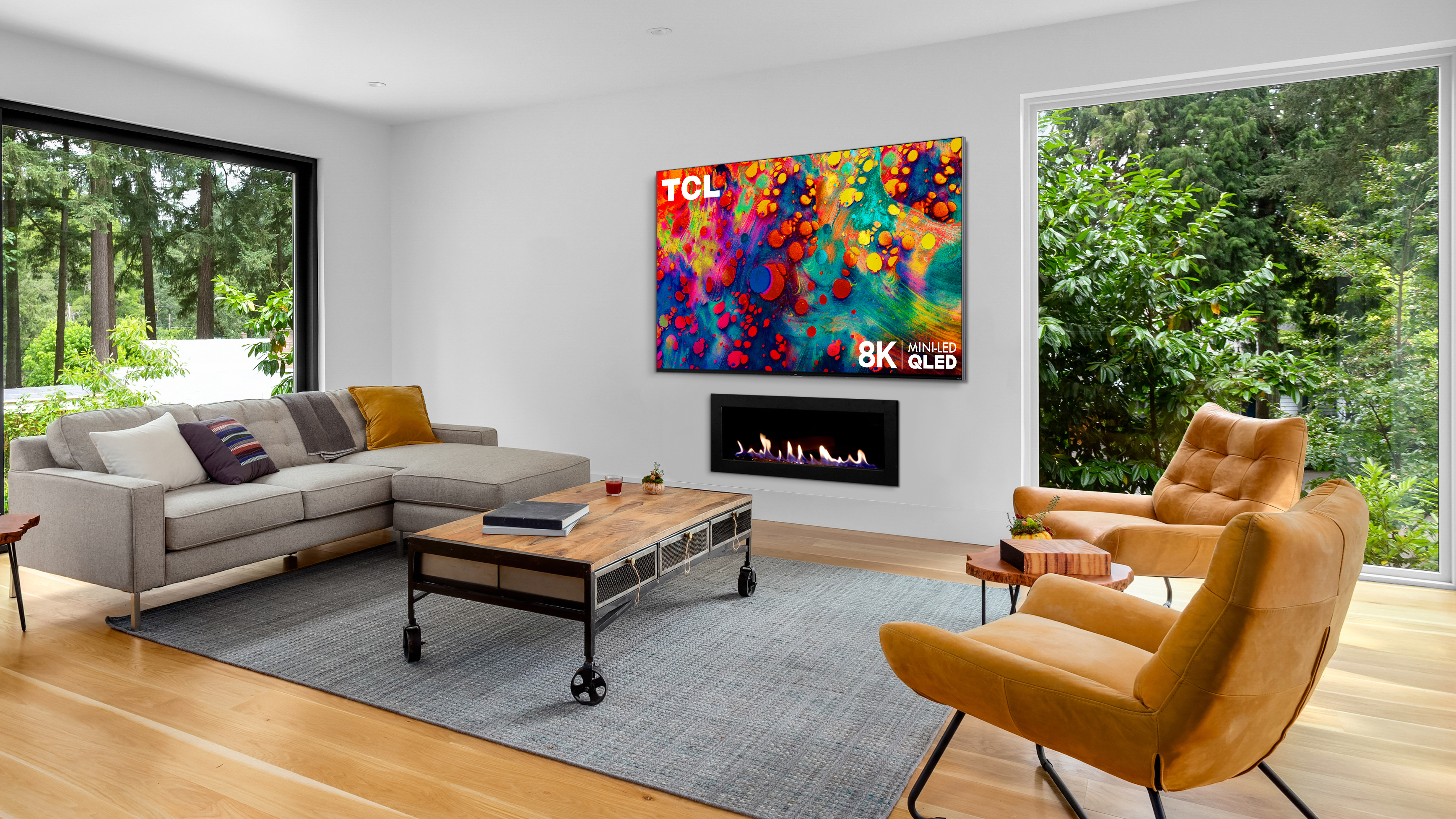TCL 6-Series 2021 8K QLED TV
Over the last four years, the TCL 6-Series has become synonymous with fantastic performance at an unbeatable price. Until now, that’s been limited to 4K models that have progressively gotten better over the previous years, with technologies like QLED introduced in 2019 and Mini LED thrown into the 6-Series in 2020. This year, however, we’re adding 8K resolution to the list.
The TCL 6-Series 8K (R648) is officially – by our count at least – the cheapest 8K TV on the market at $2,199 for the 65-inch version of the screen and $2,999 for the 75-inch model. That undercuts the likes of Sony, Samsung and LG by hundreds of dollars (a real feat) and continues the 6-Series’ trend of underpricing the competition.
But in order to steal the crown of best 8K TV, however, the TCL 6-Series 8K has to outperform the Samsung Q900TS, LG QNED 99 and Sony Z8H… something we’re not entirely confident about given our limited amount of time with the TV. Its upscaling could certainly be better from what we've seen so far and, according to TCL, only two of its ports support 4K/120Hz or 8K/60Hz, which could come back to bite it later.
Even in the case that it can’t outperform those TVs, though, the TCL 6-Series 8K offers us a glimpse of what an affordable 8K TV looks like – and it’s absolutely fantastic.
Price and release date
The TCL 6-Series 8K is part of TCL’s new 2021 TV lineup and is arriving in August 2021 at most American retailers. It’s set to cost $2,199 for the 65-inch version of the screen and $2,999 for the 75-inch model, though we’re hoping to see some price drops around Cyber Monday and Black Friday later this year.
In terms of the competition, the TCL 6-Series R648 is much cheaper than the competition by several hundred dollars. LG’s QNED 99 starts at $3,499 for the 65-inch version of that TV and rockets up to $4,799 if you want the 75-inch version. The Sony Z8H is $3,999 for the 75-inch version while Samsung’s Q900TS starts at $4,499 for the 65-inch version.
All that being said, the entry-level 8K Samsung Q800TA is the closest in price to the TCL 6-Series: it’s $2,999 for the 65-inch QN65Q800TA while the 75-inch version of the TV is currently on sale on Samsung’s website for $2,899 – $100 less than the 6-Series.
So what’s one to make of all this? The TCL 6-Series is the cheapest on the market ahead of Sony, LG and Samsung– but maybe not quite as cheap as we had hoped it’d be.

Design
So what are you paying for, exactly, with this 8K TV? Well, a good chunk of it is its higher resolution and better AIPQ Processor that we’ll cover below, but also the quantum dot filter and Full Array Local Dimming Mini LED lighting that has hundreds of contrast control zones. Specs-wise there’s a lot to like here.
Of course, packing all of this stuff into a TV makes it heavy and less slim than, say, an OLED that can go down to a few millimeters in depth thanks to the way its self-illuminating pixels work. It’s a TV that absolutely requires two people to unpack and weighs much more than other 65-inch 4K TVs we’ve tested this year.
The good news is that, thanks to the included stand, it’s rock-solid when you’ve got it on its base and doesn’t wobble at all. Installing the base is incredibly easy and the total setup process including updating the software only takes a few minutes if you already have a Roku account setup for a Roku Ultra, Roku Express or Roku Streaming Stick+.
Like the 6-Series before it, the 6-Series 8K uses Roku TV as its smart platform. While there’s nothing different about the version of Roku TV on the 8K TV and any other Roku device, the UI does look pretty nice spread out across all those pixels and it’s always great to see the plethora of supported streaming apps at your fingertips.
To go along with the Roku TV interface is the included premium TCL TV remote that is actually very different from the regular Roku remotes you may have in your house. The remote is all silver with side buttons for raising and lowering the volume, and quick buttons for Netflix, Disney, Hulu and Amazon Prime Video. It’s well-built and feels good in the hand, however it doesn’t have the 3.5mm auxiliary jack for private listening like other Roku devices have, and that’s kind of a bummer.
Last but not least, we have to cover the inputs and outputs and it’s here we found the first potential issue with the TCL 6-Series 8K: its HDMI ports. The good news here is that, thankfully, two of the HDMI ports support HDMI 2.1 and accept 4K/120Hz signal from a game console like an Xbox Series X or PS5. The bad news? Those are the same two ports that can accept 8K signals as well. What that means is, down the road, you’re only ever going to have two ports that accept 8K/60 or 4K/120 – the two other ports will top out at 4K/60.

Performance
If you’ve never seen an 8K TV before, you’ll be blown away by the TCL 6-Series. When it’s fed 4K content – especially content shot in HDR or in Dolby Vision – it really shines. The 6-Series has this perfect way of balancing vivid colors, striking contrast and great black levels all without haloing, light bleed or oversaturation.
The secret to the TV’s success lies in its Mini LED lighting that can accurately control how much light is going to any one portion of the screen at a given time and how much of the screen’s LED zones need to be turned off. That gives an LED almost OLED levels of control over the contrast and reduces issues like blooming that you’d find on other LED-LCD TVs.
In terms of color and contrast, the new 6-Series has all the tools for the job.
In fact, the only problems we’ve had with the TV’s performance right out of the box are with its motion processing (some judder on medium settings) and its upscaling – especially when feeding it HD or sub-HD content. Watching the new Masters of the Universe animated show on Netflix had serious issues with its motion until we simply turned off the motion processing from the menu, while HD shows like Kim’s Convenience looked more like a decent 4K image rather than a beautifully upscaled 8K image.
It’s here that a lot of folks would argue that this is a problem inherent to all 8K TVs – namely the lack of actual 8K content. But that argument only holds true when upscaling algorithms don’t do a great job and make content look less than stellar on the supersized screens. That isn’t exactly the case here – even the worst HD upscaling to 8K looks better than some TV’s 4K upscaling performance – it just hasn’t lived up to the high bar set by other 8K TVs.
Finally, the last point worth mentioning is the TV’s issues with audio quality. Out of the box, the 6-Series 8K defaults to a normal audio mode that does its best to balance the audio spectrum. The problem we found there was that bass dominated the mix and left dialogue hard to hear. If we changed the sound settings to focus on dialogue, it drew everything else way too far back, making movies feel significantly less cinematic. The best option we’ve found so far is to set the sound settings to Music, and deal with a slight uptick in the trebles for clear mids and strong – but contained – bass response. Hopefully, however, this is only a temporary issue and something TCL can fix with an update before launch next month.

Early verdict
We’ve only had a few days with it, but so far there’s a lot to like about the new TCL 6-Series 8K. It certainly has its quirks (see: audio issues and two HDMI 2.1 ports) but by and large the performance you’re getting exceeds the performance of similarly priced 4K TVs at a price that undercuts most of its 8K competition.
The jury is still out if the TCL 6-Series beats out the likes of the LG QNED 99, Samsung Q900A and Sony Z8H, but at a lower price it offers much of the same performance without eviscerating your bank account. So far, the TCL 6-Series 8K is keeping the tradition of the affordable 6-Series alive and well for another year.
- Need a new TV ASAP? Check out our guide to the best TVs
0 comments:
Post a Comment